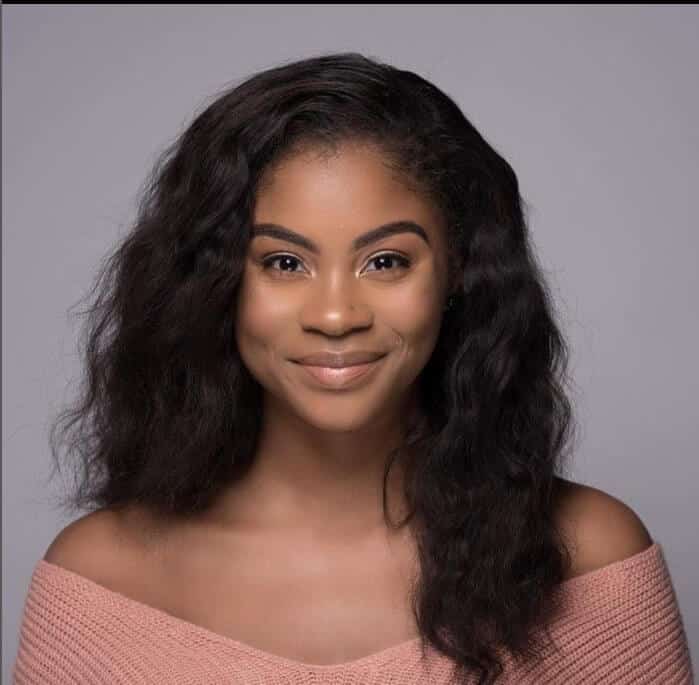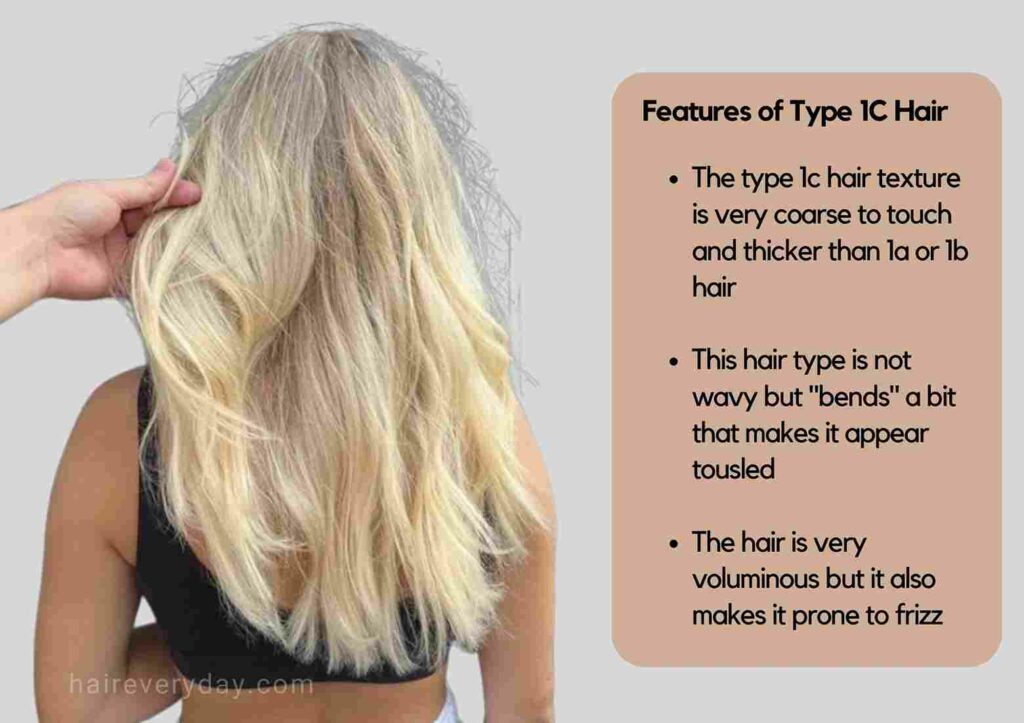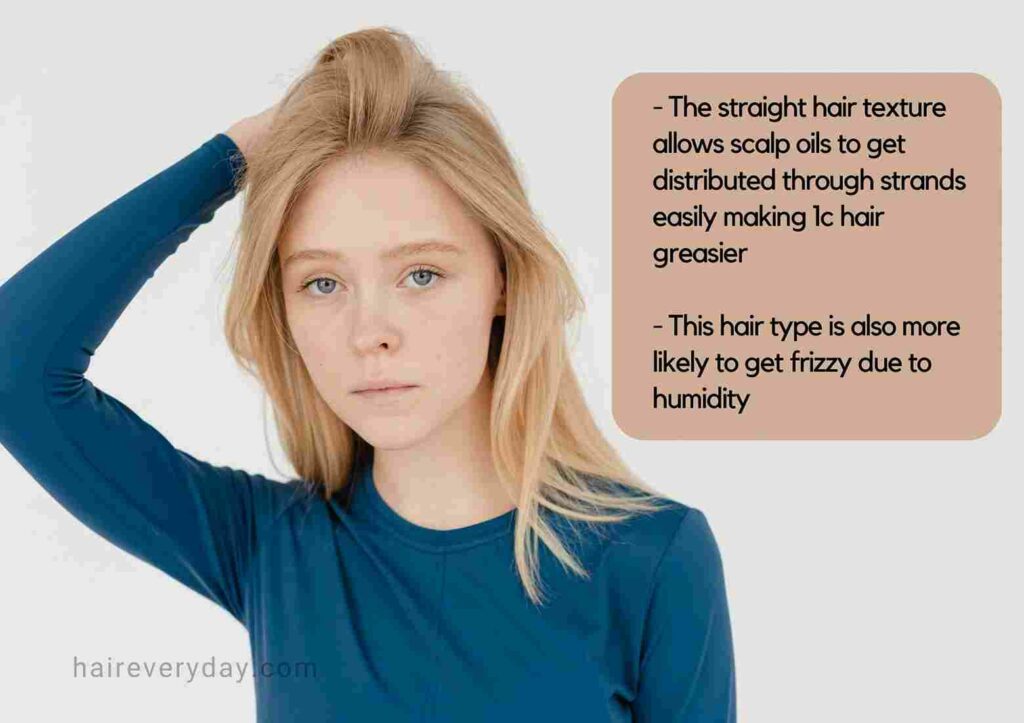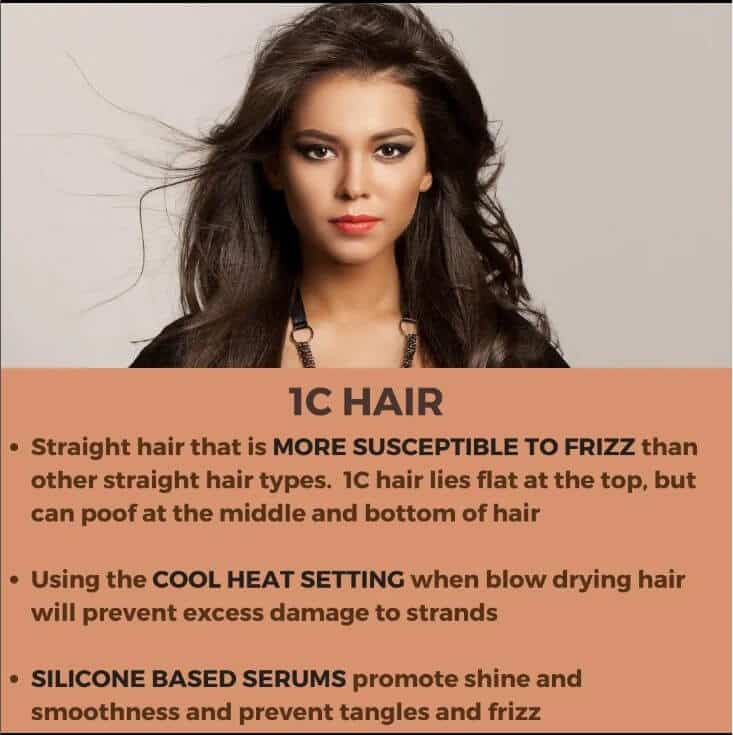Check out this 1c hair guide where you can find information about if you have 1b or 1c hair, what exactly is type 1c hair, shampoo for 1c hair, and other 1c hair care tips!
Taming 1C hair's unique blend of straight and wavy textures can be a mystery. But fear not! With over 10 years of experience as a hairstylist and haircare expert, I'm here to unveil its secrets.
In this guide, we'll delve into the best routines, styling tips, and product picks to help you achieve your haircare goals, from frizz control to effortless volume. Get ready to embrace your 1C hair's natural beauty and unleash its full potential!
1c Hair Guide
What Is Type 1c Hair? How Is It Different From 1b And 2a Hair?
Type 1c hair is often mistyped and confused with type 1b and type 2a hair. Type 1c hair varies from both these hair types very lightly. To be able to address the problems of type 1c hair, it is important to know the unique features of this hair type.

Here is a summary of these three hair types to give you an idea of their common features:
- Type 1b hair has a medium texture and subtle waves form from the midshaft to the ends. This type of hair is quite prone to oiliness and cannot hold a curl unless curling products are used.
- Type 1c hair has a texture that is between medium to coarse and has waves that are not full with a slightly tousled texture. This type of hair is prone to oiliness at the roots, but can easily hold a curl.
- Type 2a hair has a fine to medium hair texture. It also has soft waves that are more prominent. This type of hair is prone to oiliness towards the roots.
Type 1c hair falls somewhere between straight and wavy hair. This type of hair usually starts off straight at the roots and forms subtle waves towards the lower ends.
The waves are not as prominent as is seen in type 2a hair. They’re almost hidden under your hair.
Another feature of type 1c hair is that the texture is usually coarse or medium coarse.
This type of hair is mostly straight which makes for a superspeedway for the natural oils produced by the scalp.
This makes it prone to oiliness right after washing. However, because the hair is on the coarser side, it takes a while for the roots of this type of hair to appear greasy.
If you are still unsure of which type of hair you have, you can always use one of the many online quizzes to figure it out.
- Related: What Is 1A Hair
- Related: What Is 1B Hair
Best Features Of Type 1c Hair
As opposed to popular belief, type 1c hair has many good features. I actually think it’s one of the no-extra-fuss types of hair.

Let’s have a look at some of the best features of type 1c hair:
- Low maintenance is the best way to describe type 1c hair. Unlike most of the other types of hair, type 1c hair requires minimal or no hair product to look glamorous. This type of hair can be air dried or blow dried to get beautiful subtle waves that don’t require any product.
- You don’t need a complex hairstyle routine to be able to flaunt your waves. This type of hair doesn’t need fancy salon techniques to form full waves. Minimal effort goes a long way.
- Type 1c hair is strong. Thanks to its natural characteristic of not curling or angling like type 3 and type 4 hair, this type of hair is not prone to breakage. That, my friend, is a true blessing.
- Since hair strands are stronger in type 1c hair, you can achieve longer hair. You don’t have to worry about breakage which prevents an increase in the length of hair.
- While many don’t prefer coarse hair, the coarse nature of type 1c hair makes it naturally damage resistant. Coarse hair is able to retain moisture better than fine textured hair because of the presence of a spongy medulla layer on the inside. This prevents hair from getting damaged as quickly as it would in finer hair textures. Due to the thickness of the hair strands, it takes longer to accumulate the effects of chemicals, heat, and other physical damage.
- The coarseness of type 1c hair makes it naturally denser and makes it look voluminous. Who doesn’t like their hair looking full?
Common Problems Faced By Type 1C Hair
Unfortunately, it’s not all shining moments for type 1c hair. Along with all the good features, there are a few challenges that need to be dealt with in this type of hair.
Here are the most common challenges faced by people with type 1c hair:
It Gets Greasy Easily: Greasy hair can be a real troublemaker. Type 1c hair is prone to oiliness. The straightness of this type of hair allows oil to travel, fairly easily, from the sebaceous glands to the roots.
While hair doesn’t get as greasy as with some of the other types of hair, type 1c hair accumulates oil at the roots which makes hair quite greasy.
Greasy hair means that you wash hair more frequently and end up stripping hair of its natural oils. This in turn makes your scalp produce more oil.
The other side to that coin is that the wavy part of type 1c hair prevents natural oils from reaching the tips easily. This can make your ends looks dry and lifeless.
It’s Prone To Frizz: Type 1c hair is also prone to frizz. We all dread frizz, but it has a way of creeping up on all of us.
While coarse hair has its benefits, it is more susceptible to frizz than finer hair. Frizz can be absolutely frustrating because it makes hair so much harder to tame and leaves it looking messy.
Luckily, we now have many serums and other products that help combat frizz.

It’s Affected By Humidity: I know we listed volume under the best features of type 1c hair. But, this volume can easily become undesirable fluff.
In conditions like humidity or when hair is not moisturized enough, the natural volume can become a true nightmare.
What makes it even more unlikable is that getting this fluffy hair under control without making hair look flat takes quite a bit of effort.

Caring For Type 1c Hair
Having a good hair care routine is essential for maintaining your beautiful locks. We have seen all the common problems faced by people with type 1c hair. Here are a few tips on tackling these problems and maintaining your type 1c hair:
- This type of hair requires a lightweight shampoo. Washing hair once every 3 - 4 days should be enough. Overwashing this type of hair will make hair greasy due to more production of oil in the scalp.
- You can use a good quality dry shampoo in between washes to keep your hair looking fresh. Shampoos that are designed to tackle oily hair are your best friend as they will decrease the natural oil production of the scalp without drying out your hair.
- Conditioning your hair with an appropriate conditioner is an important step in your haircare routine. However, you need to be careful to condition only the midshaft to the tips.
- Deep condition once a month to keep your hair looking healthy and manageable. This will keep your hair moisturized and maintain the natural moisture balance of your hair. This will also help reduce oil production in the scalp.
- Air dry your hair as much as possible. Limit blow drying to only when necessary. Air drying helps to prevent the damage caused by heat styling tools, but it could lead to hair becoming frizzy. Using an anti-frizz serum will help with this.
- In the case that you have to use heat styling tools, use a heat protectant before you use any heat.
- Whether it’s shampoo or conditioner or serum, opt for lightweight products. You want something that isn’t going to weigh your hair down. Lightweight products will help prevent an oily scalp and your hair from laying flat.
How to take care of 1c hair?
If you have 1c hair, you have straight hair that tends to be fine and low in density. You may also find that your hair gets oily quickly and lacks volume.
But don't worry, with some proper care, your hair can look sleek and healthy. The first step to caring for your 1c hair is to wash it with a gentle shampoo and conditioner. Look for products that are sulfate-free and specifically designed for fine hair.
Be sure to massage your scalp gently to avoid damaging your hair strands. After washing your hair, let it air dry as much as possible. Avoid using a hairdryer as the heat can damage your hair. If you do need to use a hairdryer, set it to a cool setting.
To add volume to your hair, use a volumizing mousse or spray. Apply it to your roots and distribute it evenly with a comb.
Avoid using heavy, oily hair products that can weigh down your hair and make it look greasy. If you're prone to oily hair, try to avoid touching your hair too much as the oils from your fingers can transfer to your hair and make it look greasy. You should also avoid over brushing your hair as it can stimulate oil production.
Finally, try to avoid styling your hair too often with heat tools such as straighteners or curling irons. The heat can damage your hair and make it look dull and lifeless.
Type 1C Hair: A Summary
Type 1c hair refers to a form of straight hair texture that is coarse to touch and begins curling at the ends.
This type of hair will benefit from moisture rich organic products. It is also advised to use lightweight products.
Since type 1c hair is dense and voluminous, it is best to use products that will not weigh down hair.
Also Read:

